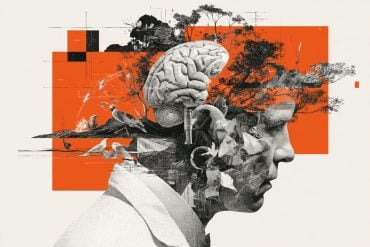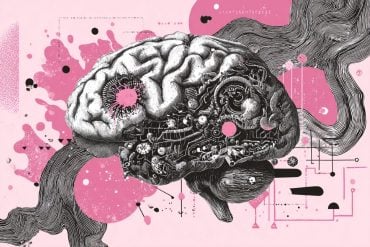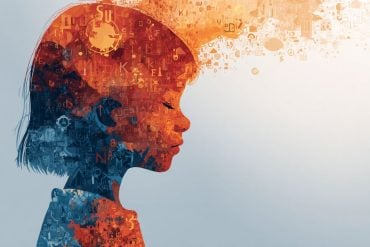Summary: Researchers report distant molecular mechanisms can generate the same features in different neurons. The findings shed new light on how brain cells develop.
Source: NYU.
Distinct molecular mechanisms can generate the same features in different neurons, a team of scientists has discovered. Its findings, which appear in the journal Cell, enhance our understanding of brain cell development.
“We now have a better comprehension of how neurons form and acquire the features that allow them to fulfill their function in neural circuits that lead to specific behaviors,” explains Nikos Konstantinides, a post-doctoral fellow at New York University’s Department of Biology and one of the paper’s lead authors. “These results point to several potential pathways for medical advancement, such as directing stem cells towards specific neuronal types that can be used to treat brain diseases by cell replacement therapy or by triggering neural stem cells to replace damaged tissue.”
The brain contains many types of neurons that control our behavior; each neuron has distinct features that allow them to exert different functions. In order to regulate their interactions, neurons communicate with each other using specific chemicals called neurotransmitters.
The focus of the research published in Cell were the neurons in the visual system of the fruit fly Drosophila, which is commonly studied in deciphering the basic principles that direct the functions of the brain.
Conducted in the laboratories of Professor Claude Desplan, the paper’s senior author, at the Center for Genomics and Systems Biology at NYU Abu Dhabi and NYU’s Department of Biology, the study deployed a cutting-edge technology, Drop-seq, to sequence the genes expressed in each of tens of thousands of cells.

Their results showed that different neuronal types in the fly visual system can acquire similar features–specifically, expression of the same neurotransmitter–using different mechanisms.
More broadly, the researchers discovered that this dynamic applies to other neuronal characteristics, resulting in a deeper understanding of how complex brain tissue composed of hundreds of interconnected cell types can form.
“The human brain is extremely complex and contains neurons belonging to thousands of cell types, rendering it technically very challenging to study and to understand how neurons are generated and specified,” explains Katarina Kapuralin, a post-doctoral researcher at NYU Abu Dhabi and the study’s other lead author. “It is therefore necessary to study simpler nervous systems where we can use new technology to understand each of the cells that compose these brains. This will help us define fundamental rules that apply to more complex nervous systems.”
The study also included Chaimaa Fadil, an undergraduate student at NYU Abu Dhabi at the time of the research and currently a Rhodes Scholar, Luendreo Barboza, an NYU doctoral candidate, and Rahul Satija, who is an assistant professor in NYU’s Center for Genomics and Systems Biology and a core faculty member at the New York Genome Center.
Funding: This work was supported by grants from the National Institutes of Health (R01 EY017916), the NYU Abu Dhabi Institute (G-1205C), and by a National Institutes of Health New Innovator Award (DP2-HG-009623).
Source: James Devitt – NYU
Publisher: Organized by NeuroscienceNews.com.
Image Source: NeuroscienceNews.com image is in the public domain.
Original Research: Open access research for “A Single-Cell Transcriptome Atlas of the Aging Drosophila Brain” by Kristofer Davie, Jasper Janssens, Duygu Koldere, Maxime De Waegeneer, Uli Pech, Łukasz Kreft, Sara Aibar, Samira Makhzami, Valerie Christiaens, Carmen Bravo González-Blas, Suresh Poovathingal, Gert Hulselmans, Katina I. Spanier, Thomas Moerman, Bram Vanspauwen, Sarah Geurs, Thierry Voet, Jeroen Lammertyn, Bernard Thienpont, Sha Liu, Nikos Konstantinides, Mark Fiers, Patrik Verstreken, and Stein Aerts in Cell. Published June 14 2018
doi:10.1016/j.cell.2018.05.021
[cbtabs][cbtab title=”MLA”]NYU “Same Characteristics Can Be Acquired Differently When It Comes to Neurons.” NeuroscienceNews. NeuroscienceNews, 15 June 2018.
<https://neurosciencenews.com/neuron-characteristics-9356/>.[/cbtab][cbtab title=”APA”]NYU (2018, June 15). Same Characteristics Can Be Acquired Differently When It Comes to Neurons. NeuroscienceNews. Retrieved June 15, 2018 from https://neurosciencenews.com/neuron-characteristics-9356/[/cbtab][cbtab title=”Chicago”]NYU “Same Characteristics Can Be Acquired Differently When It Comes to Neurons.” https://neurosciencenews.com/neuron-characteristics-9356/ (accessed June 15, 2018).[/cbtab][/cbtabs]
Abstract
A Single-Cell Transcriptome Atlas of the Aging Drosophila Brain
Highlights
•A single-cell atlas of the adult fly brain during aging
•Network inference reveals regulatory states related to oxidative phosphorylation
•Cell identity is retained during aging despite exponential decline of gene expression
•SCope: An online tool to explore and compare single-cell datasets across species
Summary
The diversity of cell types and regulatory states in the brain, and how these change during aging, remains largely unknown. We present a single-cell transcriptome atlas of the entire adult Drosophila melanogaster brain sampled across its lifespan. Cell clustering identified 87 initial cell clusters that are further subclustered and validated by targeted cell-sorting. Our data show high granularity and identify a wide range of cell types. Gene network analyses using SCENIC revealed regulatory heterogeneity linked to energy consumption. During aging, RNA content declines exponentially without affecting neuronal identity in old brains. This single-cell brain atlas covers nearly all cells in the normal brain and provides the tools to study cellular diversity alongside other Drosophila and mammalian single-cell datasets in our unique single-cell analysis platform: SCope (http://scope.aertslab.org). These results, together with SCope, allow comprehensive exploration of all transcriptional states of an entire aging brain.






